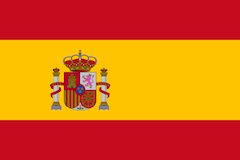Any study of public celebrations, rituals, and other religious practices needs to start from a thorough understanding of how the senses are organized in that society. I propose that at the core of the predominant form of knowledge in the Andes has long been the unity of hearing, sight, and felt bodily movement (kinesthesia). This unity is essential for Andeans to learn and remember. Furthermore, kinesthesia seems to be a crucial sense that shapes and organizes the other two. Clearly, this form of knowledge is not exclusive of the Andean region, and may be similar in other places where the centrality of public performative practices is apparent.
Besides learning about this form of knowledge by participating in the pilgrimage to Qoyllur Rit’i with the people of Pomacanchi on three occasions and living in the community for various periods over the course of six years, an important element in my learning was to converse with them in their native language, Quechua (the largest Native American language alive today, with 8 to 12 million speakers). This was essential to capture many dimensions of their experience, which can only be fully understood in their language. I also learned key dimensions by paying close attention to Quechua oral tradition from pre-Hispanic times until today. Andean oral tradition emphasizes the constant movement across the landscape in the form of exploration or, very frequently, as a chase or persecution. This is clearly the case in the story of the origin of the shrine of Qoyllur Rit’i, where a final chase ends in the apparition of the Taytacha on the rock. This story also emphasizes the centrality of music and dance in mediating the encounter of the two central characters of the story, the boy Jesus and a local Quechua-speaking shepherd boy.
Through all festive occasions Andeans learn and remember many relevant concept-feelings. I use this compound term to emphasize that thought and feeling are always together and that we need to avoid the body/mind dichotomy that has plagued the humanities and the social sciences for too long. For example, one important concept/feeling is that of pampachay, which has been translated under a Catholic evangelizing light as “forgiveness.” However, during the pilgrimage, through a series of actions accompanied by music we learn that pampachay is actually an Indigenous concept of leveling that entails a process of reciprocity that can only be accomplished if one completes a duty publicly.
Music is essential for the walk to the sanctuary, and during all the days that this ritual lasts, it mediates the important encounters that take place from beginning to end. (Watch, listen to the video above, made on pilgrimage.) When talking to the participants about the importance of music for the pilgrimage, they expressed that without music “it would be like not going at all,” “they would walk like dammed souls (condenados),” “they would be disoriented (thama), “they would walk like the blind (nawsa), and like the deaf (upa).” There are two melodies that are constantly played by the groups’ musicians, the Chakiri Wayri and the Alawaru. The first, which is used for all movement to and within the sanctuary area, recreates the encounter of the two central characters of the origin story, as it is said that they played and danced to this tune when they met and the shepherd boy’s flocks miraculously grew. This melody is associated with happiness, vitality, and rebirth. The second is played during times of introspection, salutation, and praying while kneeling, and it is associated with respect, reciprocity, leveling, and connection with superior forces.









